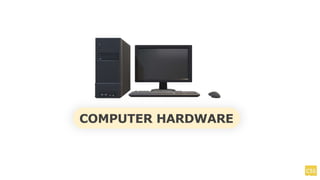This document provides an overview of computer hardware components. It defines a computer as an electronic device that can store, retrieve, and process data. It describes the main types of computers like desktops, laptops, tablets, servers, and smartphones. It then explains the internal hardware components of a typical computer like the motherboard, CPU, RAM, hard drive, power supply, graphics card, and input/output ports. It provides details on each component's function and examples of common types.




























































